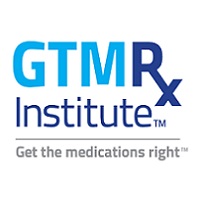 By Marcia Buck, Pharm.D., FCCP, FPPAG, BCPPS & M. Shawn McFarland, Pharm.D., FCCP, BCACP, GTMRx Institute
By Marcia Buck, Pharm.D., FCCP, FPPAG, BCPPS & M. Shawn McFarland, Pharm.D., FCCP, BCACP, GTMRx Institute
Twitter: @GTMRxInstitute
Nearly 75% of primary care visits involve medication prescribing.1 It’s how we treat most conditions. But we still haven’t managed to get the medications right.
Here’s the problem: Non-optimized medication therapy leads to more than 275,000 avoidable deaths each year, and it costs the nation over $528 billion annually.2 What do we mean by non-optimized medication therapy? It’s the misuse, underuse and overuse of medication therapy. People are dying because their medications are not being managed to ensure appropriate use.
Here’s the solution: medication optimization. Medication optimization requires consistent patient care processes to produce a medication regimen that will achieve therapeutic goals. These processes are typically absent from traditional visits.
Many strategies have been developed to achieve medication optimization, but most have been limited in scope to specific patient populations, settings or disease states. Medication therapy management provides one such example.
When medications are optimized, clinicians can prevent medication therapy problems and/or identify and resolve those problems.
MTM vs. CMM
The Medicare Prescription Drug Improvement and Modernization Act (MMA) of 2003, an early attempt to promote medication optimization, introduced the term medication therapy management (MTM), making it a covered benefit under the Medicare Part D prescription drug plan.3,4
The MMA required prescription drug plans to develop MTM programs for their Medicare beneficiaries. It stated that MTM could be provided by pharmacists and identified five core elements: medication therapy review, a personal medication record, a medication-related action plan, intervention or referral and documentation and follow-up.
Over the years, many have worked to develop the core elements of MTM to standardize delivery and to strengthen the evaluation of benefit.5 Unfortunately, adoption of MTM as the standard bearer for medication optimization has been limited by variation in both implementation and provision of the service leading to ambiguity as to what the definition and provision of MTM actually is.
Bottom line, MTM is a medication-focused optimization strategy.
Comprehensive medication management (CMM) was developed to address the shortcomings of MTM. CMM is a patient-centered approach to optimizing medication use and improve patient health outcomes that is delivered by a clinical pharmacist working in collaboration with the patient and other health care providers.6
It is a comprehensive patient care process with a set of essential functions and operational definitions that explicitly outline the steps required to deliver the intervention consistently. CMM is not ambiguous at all. This defined process ensures each patient’s medications are individually assessed to determine that each medication has an appropriate indication, is effective for the medical condition and achieves defined patient and/or clinical goals that are specific and individualized to the patient.7,8
CMM encompasses all of a patient’s medications: prescription, nonprescription, including alternative and traditional therapies as well as vitamin and supplements. Like MTM, CMM results in an accurate medication list prepared by the pharmacist and communicated with the patient and provider. But CMM goes further. It ensures that the entire medication regimen is optimized, taking into account patient-specific issues. CMM ensures, in a comprehensive whole person approach, that the patient’s medications are safe given the comorbidities and other medications being taken and that the patient can adhere to the prescribed regimen and take the medications as intended.
In MTM, the pharmacist often works apart from the health care team. In CMM, the clinical pharmacist functions as part of the team, working directly with other providers in initiating, modifying or discontinuing medications, ordering labs and documenting these changes in the EHR. Typically, the pharmacist and the medical practice establish a collaborative practice agreement before outlining the arrangement.
MTM is linked to Medicare Part D; in contrast, CMM is appropriate for patients with Medicare Part B as well as any other patients being treated with multiple medications prescribed by one or more physicians. CMM can be highly effective for any patient, but we’ve seen the greatest benefit in medically complex patients with multiple chronic conditions.
The bottom line? CMM is a more comprehensive approach to medication optimization, focusing on the whole patient rather than on the medication and where the pharmacist is integrated and responsible for medication changes with the team.
The evidence: CMM works
The best way to measure the impact of any medication optimization initiative is through the lens of the Quadruple Aim: Provide better care, reduce health care costs, improve the patient experience and improve clinician well-being.9
So that’s what we did: GTMRx has developed an evidence document that compiles the evidence for CMM. Many of the papers cited in the document demonstrate the effectiveness and long-term value of CMM in the patient care process.
The metrics used in these CMM studies include a wide range of disease state biomarkers, cost reductions related to health care utilization and expenditures as well as measures of adherence to the medication regimen, patient satisfaction and health care provider well-being.
If you want to learn more about the evidence supporting CMM or simply have questions contact, us at info@gtmr.org.
For cited references in this article, see original source. This article was originally published on the GTMRx Institute blog and is republished here with permission.
